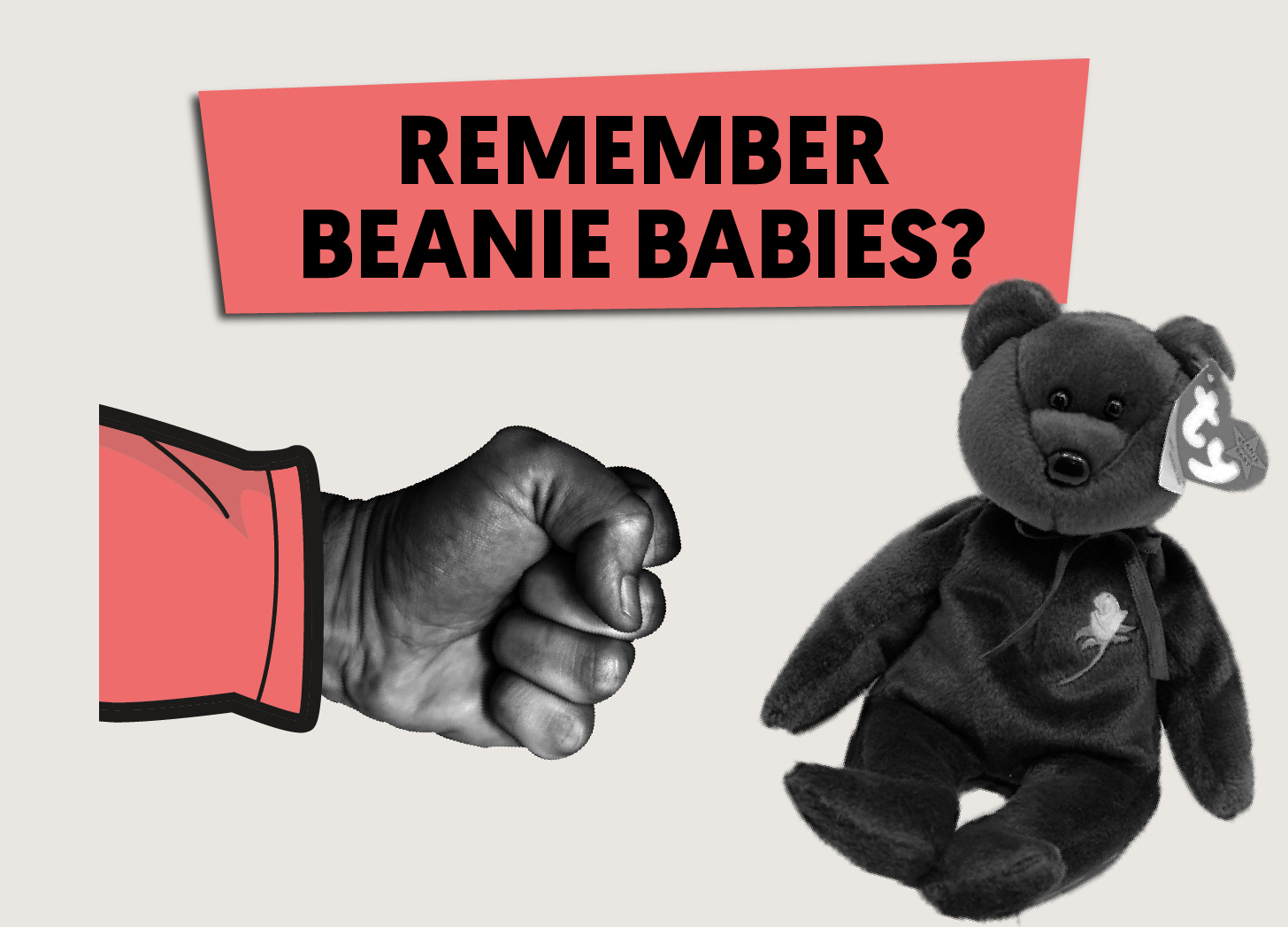Remember Beanie Babies?
What does the Beanie Baby craze of the late 1990s tell us about the power of branding and labels?
For anyone new here, I’m the founder of Woo Punch, a brand consultancy rooted in evidence-based brand design. I write about the evidence that debunks brand purpose, differentiation, brand love, loyalty marketing, customer personas, color psychology, mission statements, customer engagement, AdTech, and “hustle culture.”
Want to chat about your brand? Schedule a free intro call.
On November 5, 1999, in Judge Gerald Hardcastle’s Family Courtroom, Las Vegas, a grown man and woman sat on the floor, dividing a pile of toys between them.
The judge’s instructions were that Frances Mountain, and her ex-husband, Harold Mountain, would each take turns selecting their favorite stuffed animal until they were all gone. Frances had the first pick. She scrambled over to Maple Bear while Harold cursed the judge.
Maple Bear is a white bear with a red ribbon around its neck and the Canadian flag on its chest. There is nothing special about Maple Bear unless you’re a Beanie Baby collector in the 1990s.
What makes Maple Bear so special to this strange couple — enough for them to engage in a custody battle over stuffed animals — was not Maple Bear’s sentimental value. It was not the couple’s love for Canada (a country they might not have stepped foot in). Nor was it about a fight to get a little girl her favorite stuffed animal back.
Maple Bear was special because of a small tag attached to the bear’s left ear, nestled inside a protective plastic cover.

This custody battle was about money.
The pile of Beanie Babies on the floor was worth between $2,500 - $5,000. So Maple Bear was worth more money than all the other Beanie Babies on the floor. Around $500 at the time. However, if Frances and Harold owned Princess Bear (a tribute bear to the late Princess Diana), Frances would have walked away with $10,000 from her first pick.
Both bears were worth a meager $5 just two years prior.
Maple Bear and Princess Bear are not made of gold, diamonds, Egyptian cotton, or silk from specially trained silkworms. Instead, they were cheaply made in China out of polyester and plastic pellets. What made these bears so valuable was their tag, and on that tag, two lowercase bold letters, “t” and “y.”
Without the signature, Ty Inc. tag attached, each Beanie Baby was worth half as much money in mint condition. So naturally, Frances and Harold Mountain bought “tag protectors” for their Beanie Baby collection (as did I for my collection when I was 13 years old). But the actual value of the Ty tag had less to do with the physical tag itself.
The Ty tag symbolized value, at least in the late 1990s.
While labels rarely inflate the value of products to the same extent as the Ty tag raised the value of stuffed animals, consumers are convinced by labels to spend more money than they should on products daily. For example, consumers spend 30-40% more money on a designer handbag if it has two uppercase gold “G’s” facing one another, attached to a zipper. Likewise, consumers spend 27% more money on a red can of cola with white cursive letters than on a nearly identical tasting generic cola at their local supermarket.
Nowhere else is the power of a label more evident than over-the-counter drugs.
A different red and white label containing the letters “t” and “y” represents a 95% increase in value over its generic counterpart. Tylenol pain relievers cost $5.50 more than Walgreen’s generic pain relievers, despite Walgreen’s tablets containing the same active ingredients and even being required by the FDA to be precisely as effective at relieving pain as Tylenol. Every label starts out meaningless.
When Ty Warner launched his pellet stuffed animals in 1993, the Ty tag had no weight attached. 2 years later, a group of women in Naperville, Illinois (a suburb of Chicago) started collecting Beanie Babies with their daughters. They noticed some Beanie Babies were rarer than others.
Those Beanie Babies were rare for a reason. Kids didn’t want them.
Before long, people started obsessing over these “retired” Beanie Babies. Suddenly, Beanie Babies transitioned from being toys for kids to collector’s items for adults. It wouldn’t be long before Ty Warner began to capitalize on this obsession, and the Ty tag would shoot up in value.
Your brand’s label might mean very little to consumers right now, but as it becomes more and more recognizable over time, it will open up all kinds of opportunities. A label can help you to charge more, sell more products, build a long-lasting and reputable business, or fuel a fad.
Never underestimate the power of a label.





